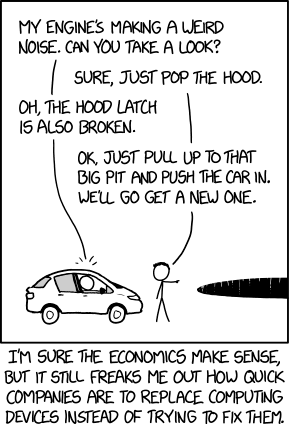4:48 AM
At work we are currently designing an automation layer for orbital determination operations where we want to run literally hundreds of variations of the models in order to find a spacecraft state estimate which is, we think, the closest to what it actually is
I'm also one of the two lead developers of a NASA-funded two-year long project which is designed to do onboard orbital determination. We're also running different models and different variations of the filters onboard. A propagator by itself would not be sufficient to provide any kind of useful information concerning the spacecraft state.
Sure, it would return a state vector, but no astrodynamist should use that vector for anything. Without any uncertainty information around this estimate, it's just a stab in the dark
And in order to get an uncertainty, you need at the very least different models running where you can average the solutions, and not just an SGP4 or 8
In operations, we also always use ground measurements with Doppler effects, turn around time of the onboard equipment, general relativity and oscillator instabilities (which causes clock drifts)
If any engineer walked into my ops planning room and told me that they were going to "estimate" the spacecraft state by running an SGP model on board, they would be given a copy of the Statistical Orbital Estimation book and told to read the first page of the first chapter
A propagator does not provide a spacecraft estimate. It only propagates an initial estimate forward in time without any uncertainty in the models. The SGP models themselves are very incomplete models
The MIT Lincoln Lab, which runs several (all?) of the radars for debris tracking, uses a simple SGP8 model as a baseline of the estimation. But they run Monte Carlos on it with variations of the model. They also scan the sky several times per day, and feed those measurements to correct the shape model of each debris
5:30 AM
5:42 AM
0
![]() A recent comment includes the following:
As my professor of OD would say "orbital determination is more of an art than a science."
and was also referenced in chat:
But OD is really an art, as I tried to illustrated with my example of the GRAIL mission
I can't say this is incorrect be...
A recent comment includes the following:
As my professor of OD would say "orbital determination is more of an art than a science."
and was also referenced in chat:
But OD is really an art, as I tried to illustrated with my example of the GRAIL mission
I can't say this is incorrect be...
Note, the locally executed examples I have here for the use of SGP results on a spacecraft do not involve an astrodynamicist.
Basically I think you are mixing apples and oranges. A satellite with a fairly stable clock and which can receive small message via radio (a TLE) every few days will be able to calculate its own position to within several kilometers.
5:58 AM
6:46 AM
@ChrisR as far as the NASA-funded two-year long project which is designed to do onboard orbital determination. is the aim to find a "less scientific, more artistic" method? Did the proposal include language like "orbital determination is more of an art than a science"?
9 hours later…
3:27 PM
1 hour later…
5:07 PM
« first day (1855 days earlier) ← previous day next day → last day (2087 days later) »
